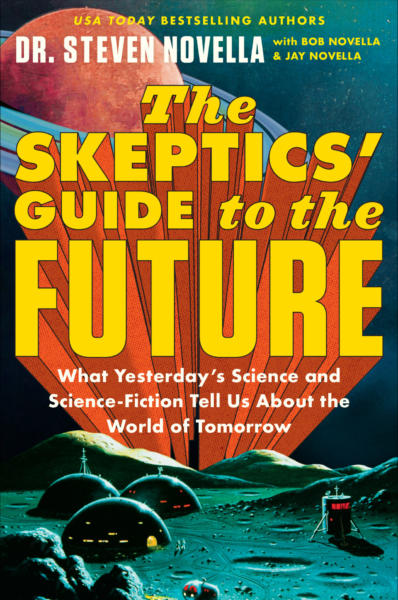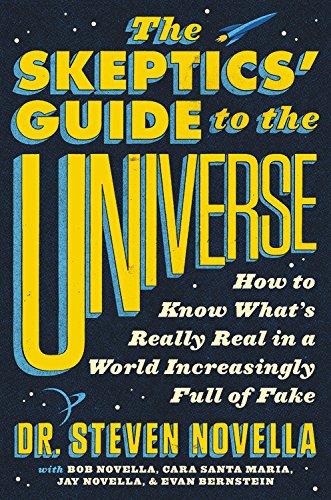May 21 2024
Antarctic Sea Ice Hits Record Low
 For decades scientists were confused by Antarctic sea ice. Climate models predict that it should be decreasing, and yet it has been steadily and slowly increasing. It also made for a great talking point for climate change deniers – superficially it seems like counter evidence to the global warming narrative, and at least paints scientists as if they don’t really know what’s going on.
For decades scientists were confused by Antarctic sea ice. Climate models predict that it should be decreasing, and yet it has been steadily and slowly increasing. It also made for a great talking point for climate change deniers – superficially it seems like counter evidence to the global warming narrative, and at least paints scientists as if they don’t really know what’s going on.
That talking point was never a good one. It was really just an excellent example of the bad faith strategies of deniers and a misunderstanding of how science works, and also how climate works. Scientists pointed out that “global warming” does not mean that the planet is warming everywhere equally. This is why “climate change” is a better term – it is more technically precise. The climate is changing due to human activity, and while there is an overall warming trend to this change, there is a lot of local variation. For example, while Antarctic sea ice was increasing, the ice shelfs of Antarctica itself were losing mass. Also, sea ice loss in the Artic more than offset the increase in the Antarctic, and global ice has been steadily decreasing.
The climate is a complex and dynamic process, and any change over time is likely to have a lot of moving and interacting parts. It is a lot easier to model and predict net global trends than it is to model every local reaction to those trends. But this situation did set up yet another meta-experiment. Deniers claimed that global climate change itself is just a temporary fluctuation in a complex system. Some places are warming, others are cooling, and it all will eventually come out in the wash. Meanwhile, the dominant scientific opinion was that greenhouse gases are causing climate forcing, resulting in directional climate change with complex local effects but clear global trends. Eventually these global trends will dominate any short time-scale or regionally local fluctuations.
If we go back to the early 2000s, these two narratives created very different predictions about what was likely to happen over the next 20 years. Whether you consider them climate change deniers or skeptics (I have defended at length why I think “denier” is a more accurate characterization), they clearly predicted that the next two decades would see a regression to the mean in climate. We were in the middle of the supposed “pause” in climate change (which was never true, and ultimately just another bad faith argument) and the claim was that the climate would cycle back to where it was. Climate scientists, on the other hand, confidently predicted that if we continue to release CO2 and other greenhouse gases into the atmosphere, that climate change would continue. On a background of short term fluctuation, we should see a clear trend of continued warming, with each decade breaking new records.
I think the outcome of this natural experiment is very clear. The year 2023 was the warmest on record, and the hottest 10 years on record since 1850 have been the last 10.
The same is true of Antarctic sea ice. The trend of increasing ice suddenly reversed, and Antarctic sea ice extent has plummeted since around 2017. In 2023, Antarctic sea ice maximum was the lowest on record. Whatever factors were causing a local increase in sea ice was eventually overwhelmed by global warming trends. At least, that is one explanation, and likely the most plausible.
Even prior to this reversal, however, scientists had been improving their ability to model why the sea ice had been increasing over the prior 40 years. It has something to do with the connection between wind patterns and sea ice. In short (read the linked article for more details) climate change has been altering wind patterns resulting in local cooling of Antarctic sea ice during the summer resulting in greater sea ice extent during the winter. Tweaking climate models was able to explain most of the discrepancy between predictions and observations by including these factors.
Even still, scientists don’t like making assumptions, and every question is a research opportunity. The question is – what is the probability that the 2023 Antarctic sea ice minimum was just a temporary fluctuation? They framed this as a specific statistical question – without the forcing of anthropogenic global warming, what is the probability of the Antarctic sea ice extent observed in 2023? Lead author Rachel Diamond puts it this way:
“According to the models, the record-breaking minimum sea ice extent would be a one-in-a-2000-year event without climate change. This tells us that the event was very extreme – anything less than one-in-100 is considered exceptionally unlikely.”
We can look at this and say – well, 1 in 2000 chance is very low, but not impossible, and we are likely to observe some unlikely events on a regular basis, given how much stuff is happening in the world. This would be an appeal to the lottery fallacy – it may be unlikely that John Smith won this lottery, but that people win lotteries is a practical guarantee. But the lottery fallacy does not apply here for a very good reason. The lottery fallacy applies to post-hoc analysis, saying that it is unlikely after you know that John Smith won. But if someone predicted that John Smith would win, and then he did, that would indeed be a very low probability event. Even if someone said – my computer models predict that someone from this small town will win the national lottery, and then John Smith, who is from that small town, won, that again would be a legitimate confirmation of whatever statistical models were used.
In other words, the record low Antarctic sea ice did not come out of nowhere. It happened on a background of climate models predicting global warming. Further, while individual weather events may be impossible to tie directly to global warming, the more rare weather events we have, the less likely it is that these are just random rare events. There is a clear pattern emerging from the recent flooding, tornadoes, droughts, and forest fires – collectively they create a pattern that cannot be dismissed as just random statistical flukes. These trends were predicted by climate models, and those predictions are coming true.






